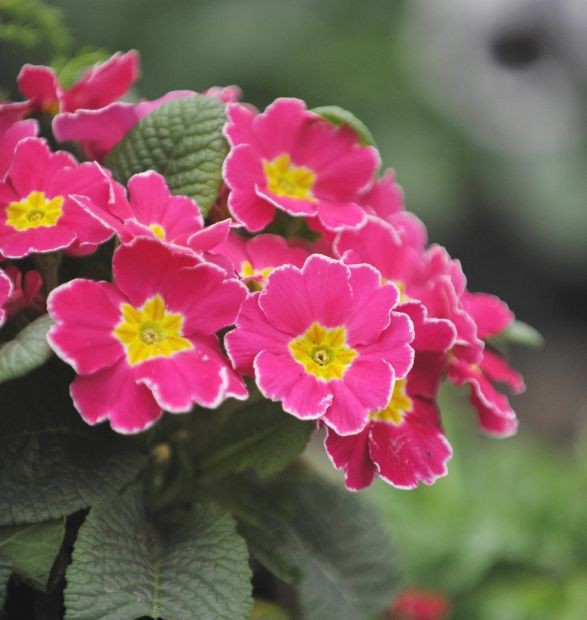From Alpine to Border: Exploring the Varieties of Primula Auricula
Exploring Primula Auricula: Varieties and Environmental Impact
Primula auricula, commonly known as Auricula or Mountain Cowslip, is a beloved perennial plant cherished by gardeners and botanists alike. With its captivating blooms and versatility, this plant has found a place in gardens across the globe. In this article, we will explore the diverse varieties of Primula auricula, delve into its cultivation requirements, and examine its environmental impact.
Here are some famous varieties of Primula auricula:
1. 'Blue Velvet'
2. 'Golden Hind'
3. 'Argus'
4. 'Double Apricot'
5. 'Old Irish Blue'
6. 'Peter Klein'
7. 'William Rex'
8. 'Sirius'
9. 'Dusky Maiden'
10. 'Marmion'
These varieties are popular for their unique and striking features, making them favorites among gardeners and enthusiasts.
Varieties of Primula Auricula
Primula auricula boasts a rich tapestry of varieties, each with its unique charm. These varieties can be broadly categorized into several types, including Alpine Auriculas, Show Auriculas, and Border Auriculas.
Alpine Auriculas
Alpine Auriculas are known for their delicate beauty and resilience. These plants typically have smaller, more refined blooms and are well-suited for rock gardens and alpine settings. They thrive in well-drained soil and can withstand colder temperatures, making them a favorite among gardeners in regions with harsh winters.
Show Auriculas
Show Auriculas are the stars of the Primula auricula world. These varieties are bred for their stunning and often dramatic floral displays. They come in an array of colors, from deep purples and velvety blacks to vibrant yellows and pristine whites. Show Auriculas are often grown in pots to protect their delicate blooms and to facilitate easy transportation to flower shows.
Border Auriculas
Border Auriculas are the workhorses of the Primula auricula family. These varieties are hardy and robust, making them ideal for garden borders and flower beds. They come in a wide range of colors and are known for their ability to thrive in various soil types. Border Auriculas are perfect for adding a splash of color to any garden landscape.
Cultivation and Care
Growing Primula auricula requires attention to detail, but the rewards are well worth the effort. Here are some key considerations for cultivating these exquisite plants:
Soil and Light Requirements
Primula auricula thrives in well-drained soil rich in organic matter. A mix of loam, sand, and compost is ideal for ensuring proper drainage and nutrient availability. While they can tolerate partial shade, these plants perform best in locations with dappled sunlight or morning sun. Excessive heat and direct sunlight can cause the leaves to scorch, so providing some shade during the hottest part of the day is beneficial.
Watering and Humidity
Maintaining adequate moisture levels is crucial for the healthy growth of Primula auricula. Do not waterlodged but the soil should be kept consistently moist. Furthermore, due to overwatering can lead to root rot, while plant can cause to wilt by underwatering. Additionally, these plants prefer a humid environment, which can be achieved by misting the leaves or placing a humidity tray nearby.
Temperature and Frost Protection
Primula auricula is well-suited for cooler climates and can tolerate frost. However, protecting the plants from severe frost is essential, especially during their blooming period. Mulching around the base of the plants can help insulate the roots and prevent frost damage. In regions with extremely harsh winters, growing Auriculas in pots and moving them to a sheltered location during the coldest months is advisable.
Environmental Impact
While Primula auricula is a cherished addition to gardens, it is essential to consider its environmental impact, particularly in non-native regions like Pakistan and India.
Biodiversity and Habitat Preservation
Introducing non-native species like Primula auricula into new environments can have both positive and negative effects on local biodiversity. On the one hand, these plants can enhance garden aesthetics and provide nectar sources for pollinators. On the other hand, they may compete with native flora for resources, potentially threatening local plant populations. Gardeners should exercise caution and avoid planting Auriculas in natural habitats where they might become invasive.
Water Usage
Primula auricula requires consistent moisture, which can strain water resources in arid regions. In areas with limited water availability, it is crucial to implement water-efficient gardening practices, such as mulching and using drip irrigation, to minimize water usage. Collecting rainwater for irrigation can also help reduce the environmental footprint of growing these plants.
Soil Health
Maintaining soil health is vital for sustainable gardening. Overuse of chemical fertilizers and pesticides can degrade soil quality and harm beneficial microorganisms. Instead, gardeners should focus on organic practices, such as composting and using natural pest control methods, to promote soil fertility and ecosystem balance.
Conclusion
Primula auricula, with its diverse varieties and captivating blooms, is a plant that brings joy to gardens worldwide. While cultivating these plants requires careful attention to soil, light, and water requirements, the rewards are well worth the effort. However, it is essential to consider the environmental impact of introducing non-native species and to adopt sustainable gardening practices to ensure a harmonious coexistence with local ecosystems. By appreciating and respecting the beauty of Primula auricula, gardeners can create vibrant and environmentally responsible gardens that thrive for generations to come.












Comments
Post a Comment
If you have any doubt, please let me know, thanks for your love and response